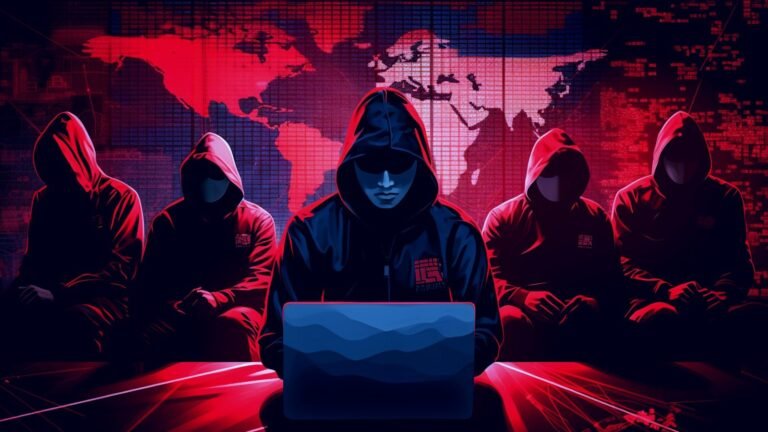Fast Facts
-
Data Breach by Kimsuky: North Korean hackers group Kimsuky has suffered a significant data breach, with information stolen and publicly leaked by two ethical hackers, Saber and cyb0rg, contrasting Kimsuky’s motives of financial gain and political agendas.
-
Contents of the Data Dump: The 8.9GB data dump includes sensitive materials such as phishing logs, the complete source code of South Korea’s Ministry of Foreign Affairs email platform, and various hacking tools, providing insight into Kimsuky’s operational methods.
-
Impact on Kimsuky’s Operations: While the breach may not have immediate long-term effects on Kimsuky, it poses potential operational challenges and disruptions to their ongoing cyber campaigns due to the exposure of their infrastructure and tools.
- Ethical Hacker’s Motive: The hackers emphasized ethical concerns in their actions, accusing Kimsuky of being "morally perverted" and driven by greed rather than the independent spirit of hacking.
Problem Explained
Recently, a significant data breach has rocked the North Korean hacker group known as Kimsuky. This breach was orchestrated by two self-proclaimed ethical hackers, ‘Saber’ and ‘cyb0rg,’ who vehemently oppose Kimsuky’s principles, accusing them of engaging in malicious activity driven by political motives rather than authentic hacking prowess. Their scathing indictment was publicly disseminated in the latest issue of Phrack, a well-regarded hacker publication released at the DEF CON 33 conference. They condemned Kimsuky for exploiting their skills for regime-driven financial gain, claiming the group’s actions are morally reprehensible.
The hackers released a staggering 8.9GB cache of Kimsuky’s backend data, which lays bare crucial aspects of their operations, revealing techniques, tools, and previously unknown campaigns. Among the leaked materials are phishing logs, source code from South Korea’s Ministry of Foreign Affairs email platform, and various malicious toolkits. This breach likely won’t annihilate Kimsuky’s capabilities, but it could pose operational challenges and disrupt their ongoing cyber campaigns. BleepingComputer, a notable technology news outlet, has reached out to cybersecurity experts to validate the authenticity and implications of this data, promising updates on their findings.
Potential Risks
The recent breach involving the North Korean hacking group Kimsuky, orchestrated by self-styled ethical hackers Saber and cyb0rg, poses multifaceted risks to an array of businesses, users, and organizations beyond its immediate scope. The leaked data not only unveils Kimsuky’s operational methodologies—such as their phishing techniques and tools like the PHP “Generator” for crafting deceptive sites—but also exposes sensitive information from targeted entities, including emails from South Korea’s Defense Counterintelligence Command and the Ministry of Foreign Affairs. This staggering breach creates a ripple effect, amplifying vulnerabilities within third-party organizations that could find themselves inadvertently implicated or compromised due to shared connections with the exposed data. As Kimsuky’s compromised infrastructure becomes widely public, it may lead to exploitation by cybercriminals seeking to ride the coattails of such high-stakes intel, enabling further malicious activities. Consequently, organizations must brace for potential reputational damage, legal ramifications, and heightened security protocols, as the ramifications of this leak extend far beyond Kimsuky itself, directly influencing the cybersecurity landscape and the trust dynamics among users and businesses worldwide.
Possible Actions
The swift containment of cyber threats is paramount, particularly in light of the recent exposure of North Korean Kimsuky hackers in an alleged data breach.
Mitigation Steps
- Incident Response Plan: Activate to contain the breach immediately.
- Threat Intelligence: Gather data on Kimsuky’s tactics and adapt defense mechanisms accordingly.
- System Patching: Apply critical updates to vulnerable systems.
- Access Controls: Review and tighten access privileges to sensitive data.
- User Training: Conduct awareness sessions for employees on recognizing phishing attempts.
- Network Segmentation: Isolate affected systems to limit lateral movement.
- Forensics Analysis: Investigate and document the breach for better understanding and future prevention.
NIST CSF Guidance
The NIST Cybersecurity Framework underscores the necessity of proactive risk management and responsiveness. Specifically, SP 800-61 offers detailed guidance on incident handling and should be referenced for effective remediation strategies.
Explore More Security Insights
Explore career growth and education via Careers & Learning, or dive into Compliance essentials.
Learn more about global cybersecurity standards through the NIST Cybersecurity Framework.
Disclaimer: The information provided may not always be accurate or up to date. Please do your own research, as the cybersecurity landscape evolves rapidly. Intended for secondary references purposes only.
Cyberattacks-V1

